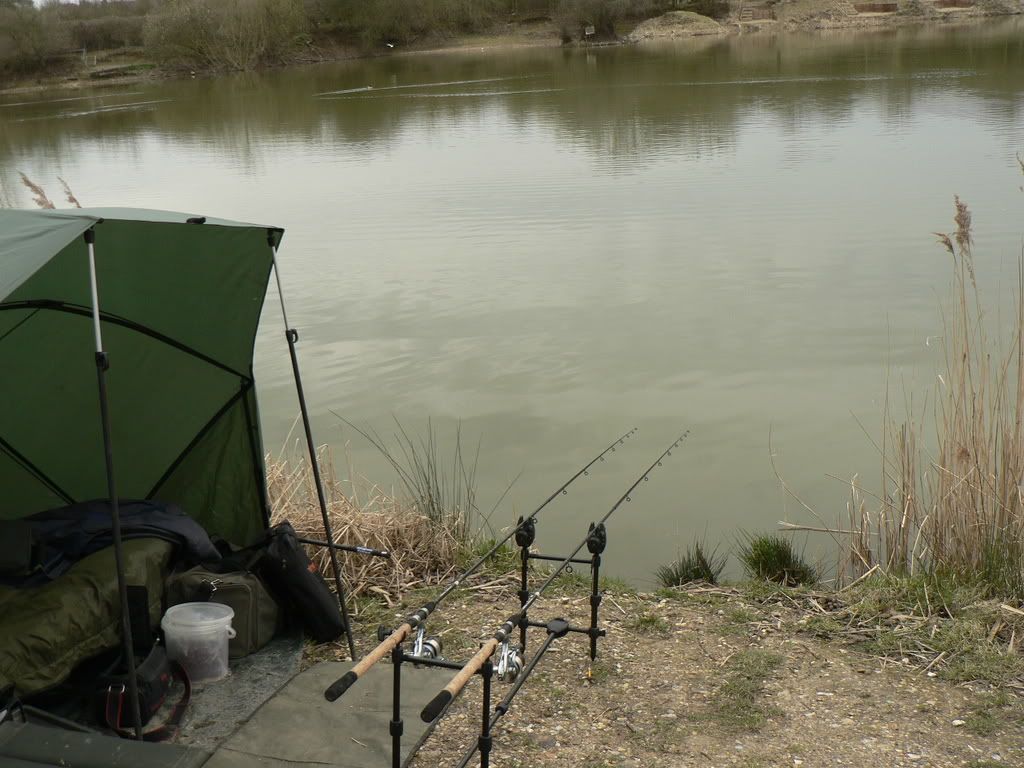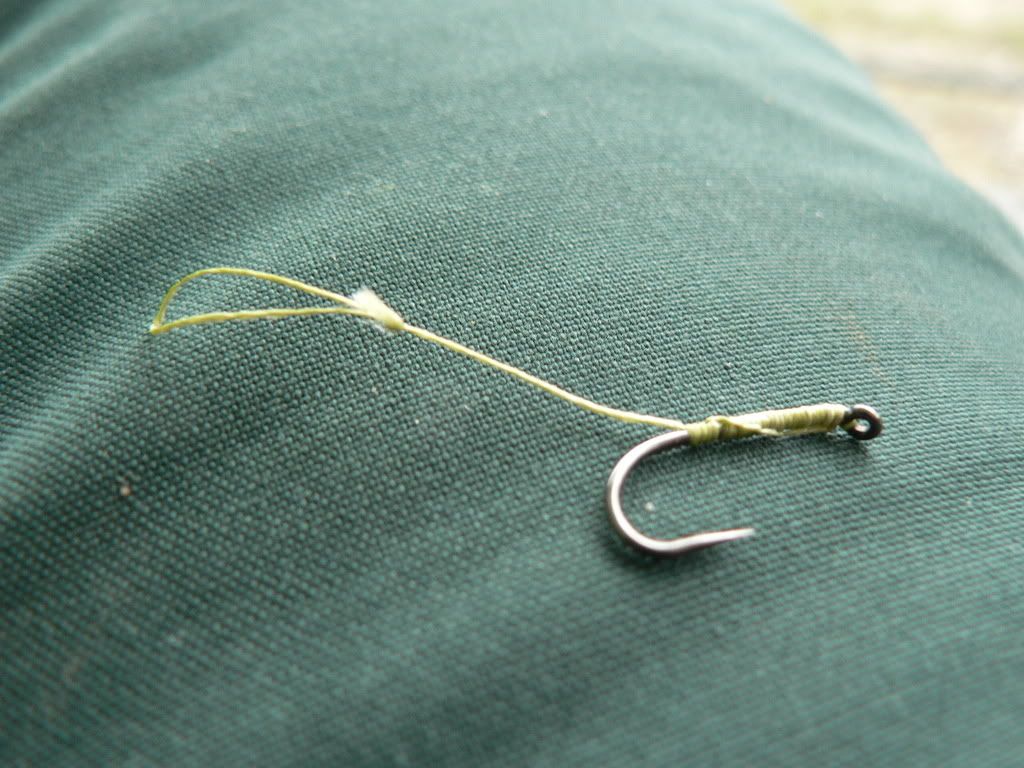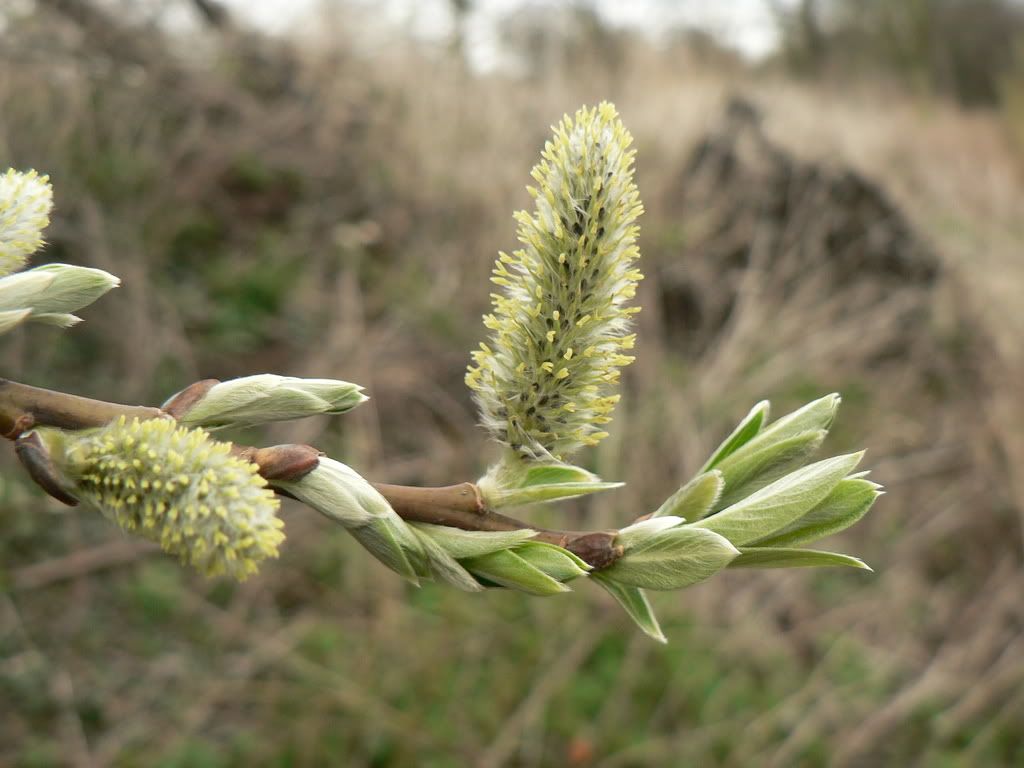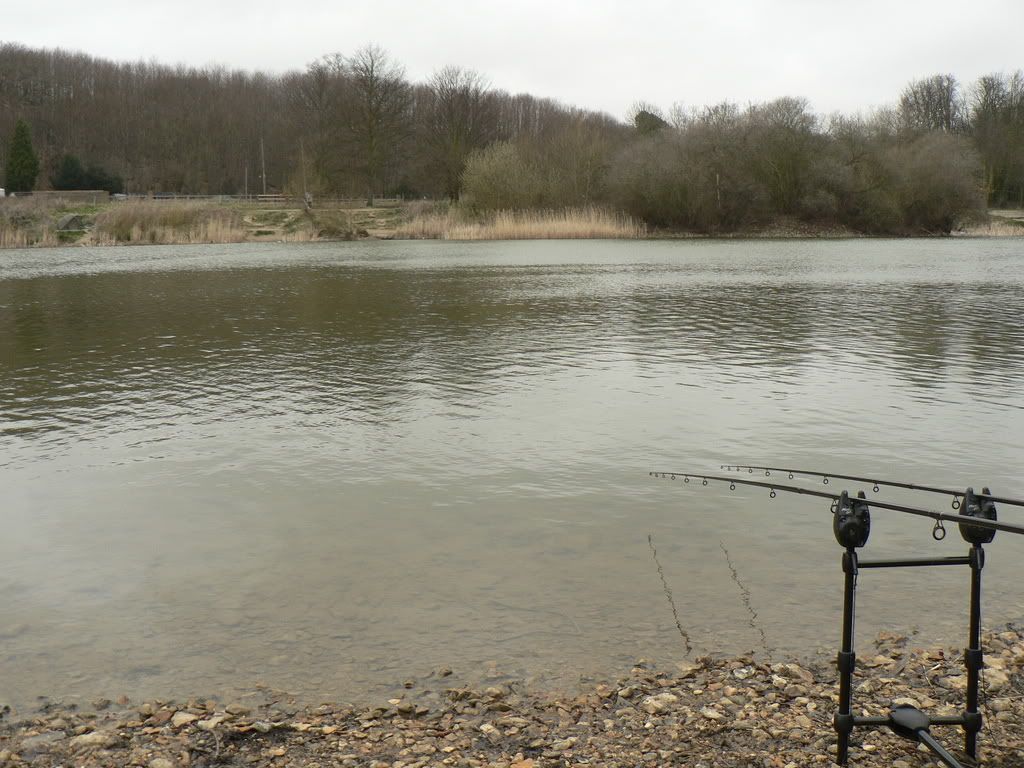Another session back at Bysing Wood trying to catch a double-figure Bream.
I had another reason for going (in what I knew were going to be bad conditions) and that was to try out my new TFG “Stormshell” bivvy. I got this from the TFG site for about £65 which I think is pretty good considering what you get for your money – twin-skin construction, raised anti-mud thingy at the front, zippable mozzie-netting, and see-thru panels in the “door”. Although it’s a one-man bivvy it has quite a large ‘footprint’ and would just about house two bedchairs at a squeeze. All packing up into a small-ish (but heavy) pack:
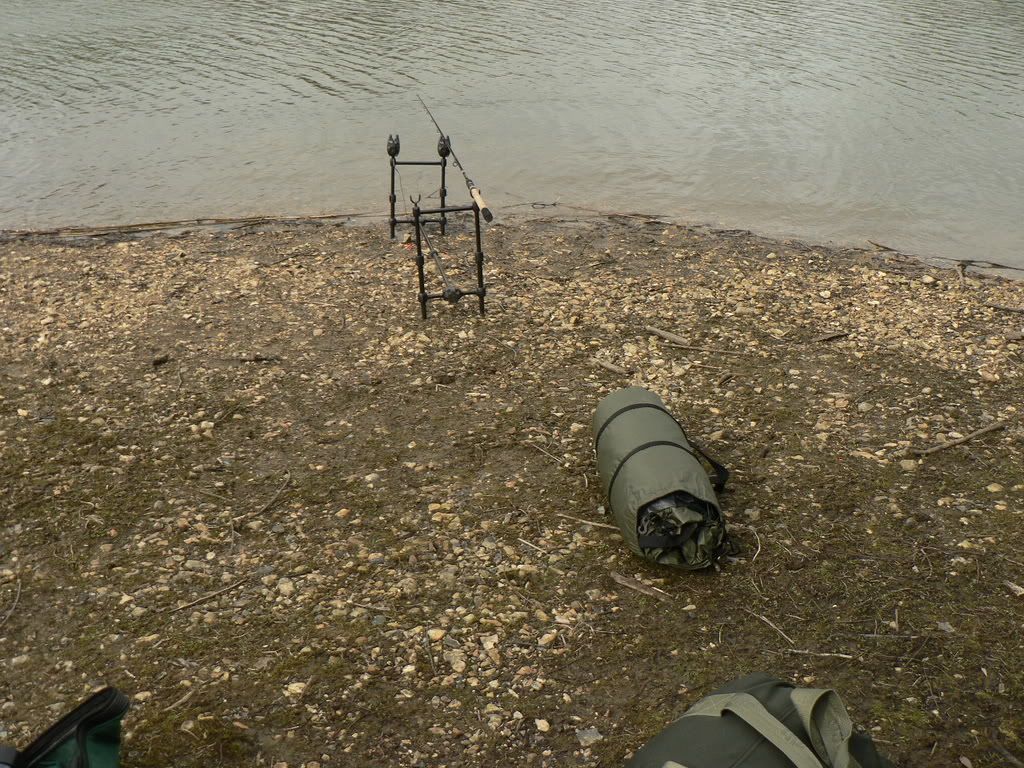
After a couple of trials in the garden, I found the best way of setting the thing up is to spread it out on the ground in-situ, and then thread the poles through the seams. This is quite a difficult and onerous job as the take-apart poles can get detached from one another. They are also in two different lengths on this model and could do with being colour-coded so you don’t thread the wrong pole through the wrong seam (which is what I did!). manufacturers please note!

I then tried pegging the thing down in each corner to stop gusts of wind blowing it into the trees but this didn’t work very well because they kept pulling out – the best way of erecting it is to then insert the ends of the poles into the metal rings on the ends of the tags. This I imagine could be a bit of a nightmare in a very strong wind but I managed, and put some of the gear inside to hold it down. In actual fact, for the majority of situations, I would think these sorts of bivvies don’t need pegging at all since they have integral ground-sheets which in effect create a fabric ‘box’; put enough weight inside and the whole thing sits where it is without further embellishment. If you are anything like me, having enough weight to go inside to hold it down is certainly not a problem (despite repeatedly trying to reduce the vast quantity of kit I take with me!)

The only difficult thing really was getting the fly-sheet on. Once again, the high wind was a real problem – and it’s important to find the bit at the front which attaches to the sticky-out canopy thing. Again, the manufacturers could do with marking the sheet with a coloured patch of some sort as you can spend ages (as I did) trying it in different positions until you get it right.
Eventually however, I got everything fastened down and tickety-boo.
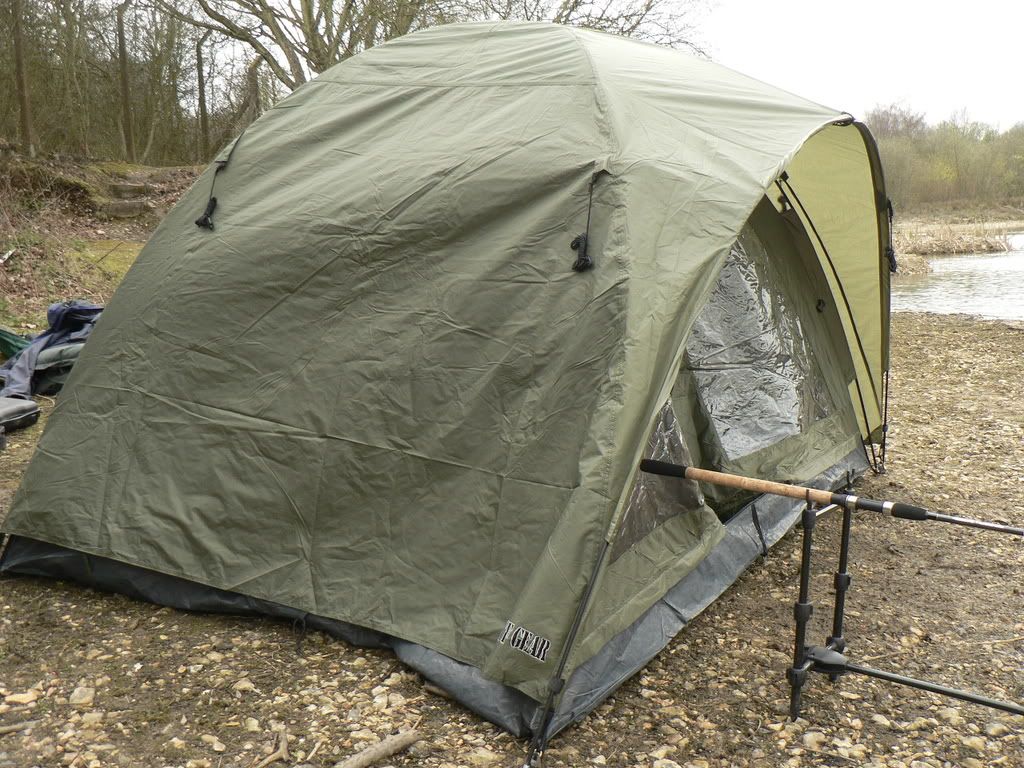
The peg was in my favourite place – The Beach. From here, you can cover quite a lot of the bottom end of the lake and there are many options from which to choose. The wind (gusting to nearly gale force) was blowing from right to left and from slightly behind so this allowed me to fish my maggot-feeders mid-lake and beyond.
I had a simple link-leger with the maggot feeder tied to six inches of the mainline. A twenty-inch length of 0.11 ‘Powerline’ was Four-Turn Water Knotted to the six pound Daiwa ‘Sensor’ and a size twelve Drennan Carbon Specimen tied on the end.
I kept casting every ten to twenty minutes during the first couple of hours to get as many maggots into the area as possible and within half an hour of starting I began getting little knocks and jerks on the bobbins. I was fully expecting this –bites from the diminutive Roach and was fully prepared for them, leaving the bites alone until they ‘hung’ themselves and self-hooked. As long as most of the maggots were out of the feeder I didn’t mind.
One thing I was keen to do was not concentrate the feed in too tight an area. Although this is fine for a day session when you can hit the spot with a fair degree of accuracy by ‘clipping-up’ and so on, it is virtually impossible in the dark, plus, with so little feed out in the water I wanted the Bream to move around and find little spots of it in the hope they’d eventually move around and find the one with the baited hook.
I think it is not always advisable to concentrate feed in one very small area every time you go fishing. This is the matchman’s accepted strategy – but is not always successful in a speci context. Wise old fish get to know heavy concentrations of feed mean trouble and definitely avoid them; very often the single bait on its own with perhaps one or two free offerings is all that’s needed to give them sufficient confidence to pick a bait up.
I had quite a few small Roach before darkness and find this most encouraging. These Roach were in prime condition and it was good to know the Pike hadn’t managed to get there gnashers round all of them. Just as I was bedding down for the night I had a really positive bite and hooked this Roach.
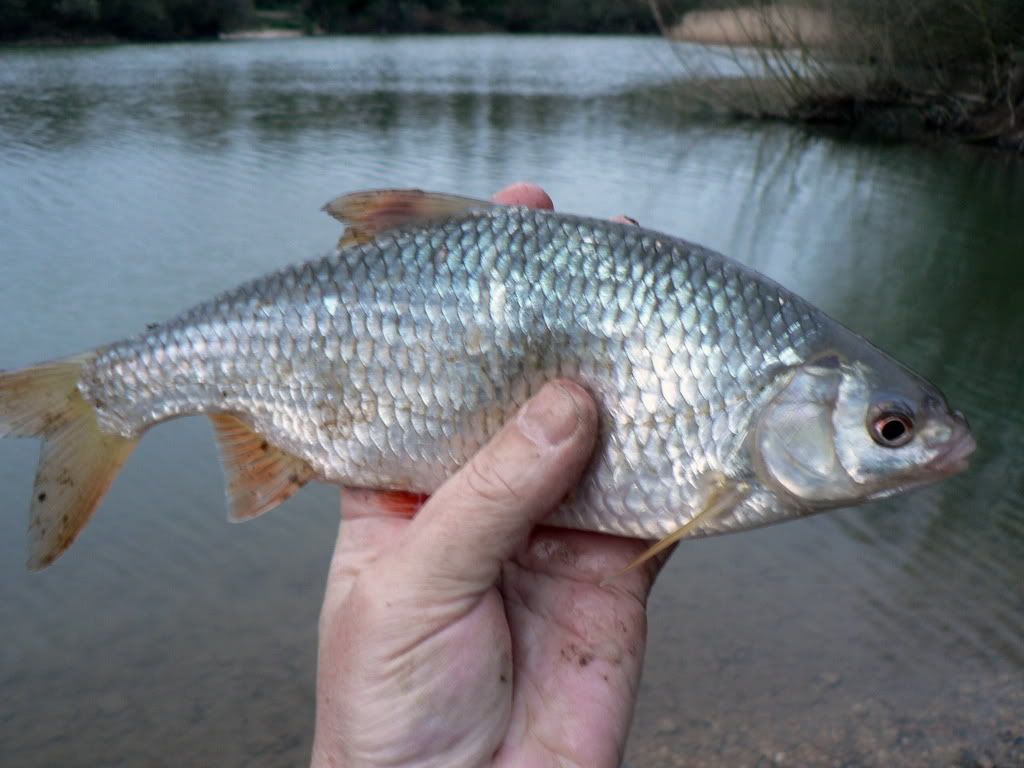
Although not huge in the grand scheme of things, it was quite a big one for Bysing Wood which is still recovering its silver-fish populations after years of depredation by Cormorants. It might just have weighed a pound but was gloriously coloured. Unfortunately, the image does it no justice and does not show the iridescent blue down its back. This is a most encouraging sign for the future.
As predicted, the Roach went to bed after dark – and were followed by the skimmers. There is currently a year-class of fish around the one-and-a-half pound mark which will gobble a bait if any quantity at all is thrown in; this was another reason for not wanting to put too much bait out. They can certainly stay with you all day if you feed them; better to let them drift away after all the scraps of feed are gone.
Then there was a blank-ish spell during which I had no action of any kind. In truth, I don’t think I would have managed it very well if I’d had because half way through the night the rain (which had been persistent, if not heavy) really started to set in and with a rising wind the session became most uncomfortable. Winter nights can be merely a matter of survival and it was during the middle of a heavy squall I had a positive take to one of the rods……
At first it felt as if I’d hooked one of the lake’s carp as there was a dogged, heavy feeling on the end; then the fish began to move in a series of heavy thumps and I had high hopes I might at last be attached to my target fish – a ten pound Bream! When I got the fish to the net and could make out a great white slab dimly lying dormant I whooped with delight! Hauling the fish up it certainly looked the part – Bream – big Bream, look simply huge. This specimen was covered in spawing tubercles around its head and gill plates and I was convinced I’d finally done it. It had to be ten!
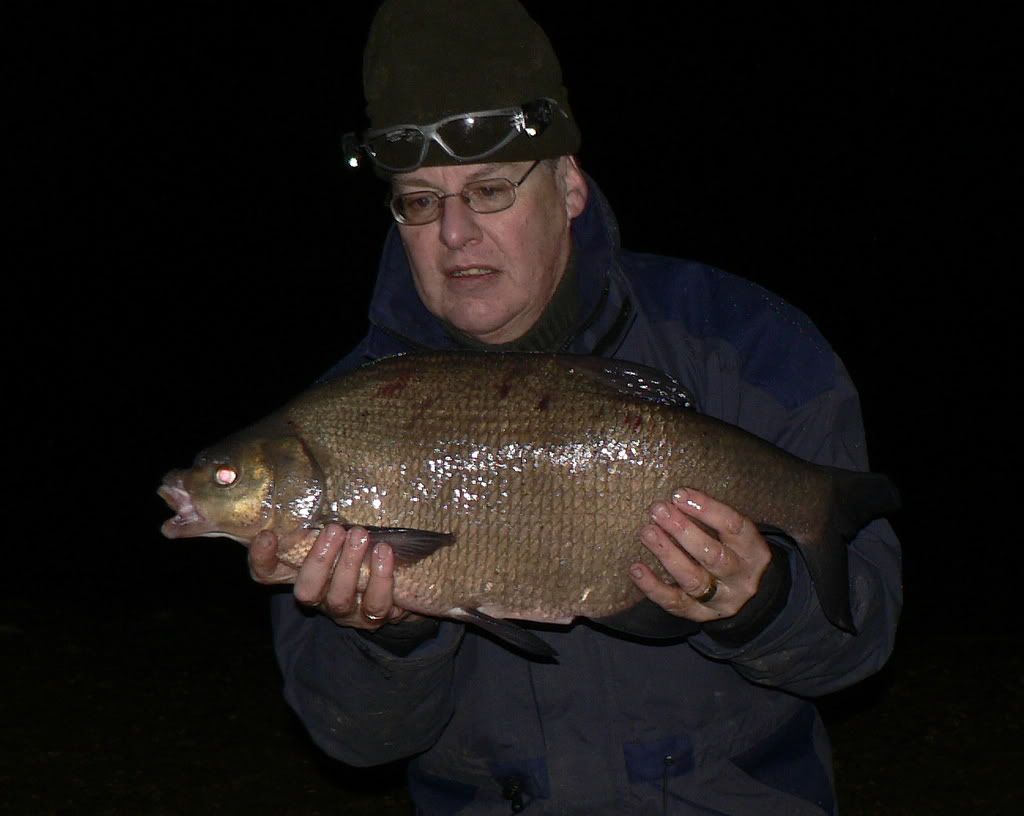
The scales however revealed a massively disappointing eight-six – well short of the target and not for the first I wondered how a fish that looked so big could weigh so little. Maybe it was because it had been such a long time since I’d caught a big Bream I was wildly out with my estimate!
You can’t be disappointed with a fish like this however. It’s made me even more determined to get the double than I was before!
As Arnie says “I’ll be back!”
